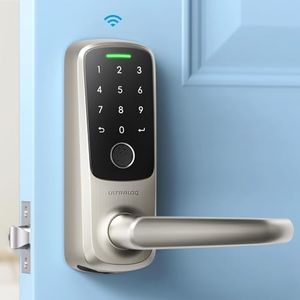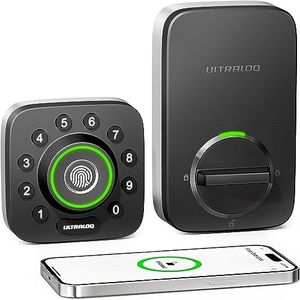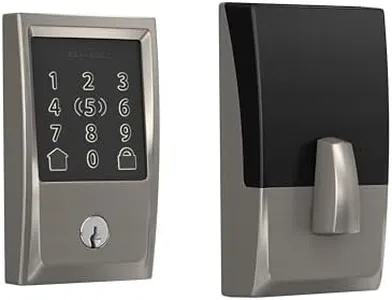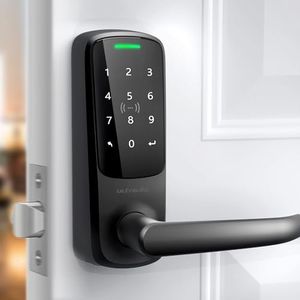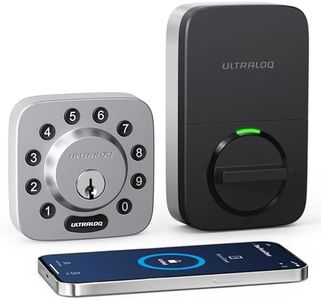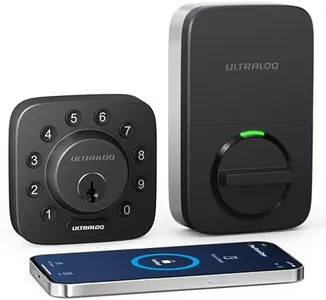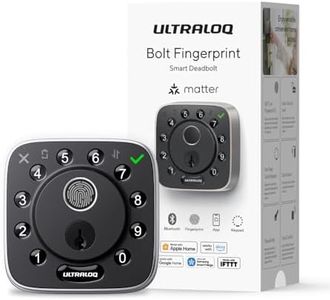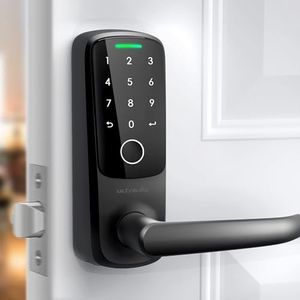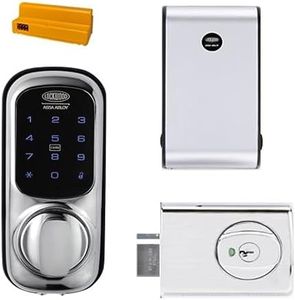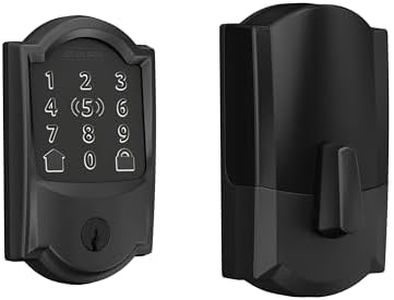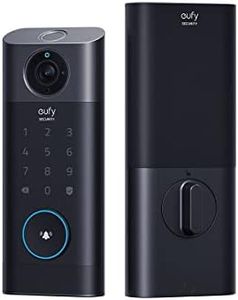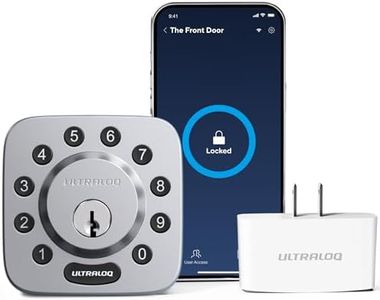We Use CookiesWe use cookies to enhance the security, performance,
functionality and for analytical and promotional activities. By continuing to browse this site you
are agreeing to our privacy policy
10 Best Keyless Entry Door Locks
From leading brands and best sellers available on the web.By clicking on a link to a third party's website, log data is shared with that third party.
Buying Guide for the Best Keyless Entry Door Locks
Choosing a keyless entry door lock for your home or office is a great way to enhance convenience and security. Keyless locks offer the benefit of not needing traditional keys, which means you'll have less to carry and worry about losing. The main considerations when picking a keyless lock are your desired method of entry, the importance of security features, and the installation process that suits your door type. Being clear about how often you'll use the lock, who needs access, and what features match your lifestyle can help you make the best decision.Entry MethodEntry method refers to how you unlock the door without a traditional key. The most common methods include keypad codes, fingerprint scanners, smartphone apps (Bluetooth or Wi-Fi), or even RFID cards. This is important because it determines your everyday experience with the lock. If you want simple access for multiple users (like family or staff), a keypad might be best. For single users or those who value quick access, fingerprint or app-based unlocking could be more appealing. Consider who will use the lock and how comfortable they are with technology. Choose keypad for reliability, fingerprint for quick, personal access, and smartphone for advanced features.
Power SourceKeyless locks usually rely on batteries, although some can be hardwired. Battery power makes installation simple and ensures the lock works even during power outages. Battery life is important; some locks can last a year or more before needing a change, while others require more frequent attention. Look for models with clear low-battery warnings. If you don’t want to worry about changing batteries, look into options that offer emergency power (such as a USB port) or consider a hardwired model if possible for your setup.
Security FeaturesThese include features like automatic lock, alarm systems, and encryption. Strong security features help protect against hacking, forced entry, or accidental lockouts. Important features might include auto-lock timers, anti-peep technology (so others can’t guess your code by looking for fingerprints or wear), tamper alarms, and strong encryption if connected to the internet. Think about your neighborhood and personal needs—high-traffic areas or homes with lots of visitors might benefit from features that prevent code guessing or notify you of failed attempts.
Installation CompatibilityNot all locks fit every door. Some keyless locks work only with specific door thicknesses, backsets, or lock types (like deadbolt vs. latch). This matters because improper installation can reduce security and damage your door. Simple retrofits can usually replace a standard deadbolt, while some locks require more modification or even a new door. Measure your existing setup and check compatibility before buying. Go for a lock that matches your current door if you want an easy setup, or be prepared for more installation work if you’re upgrading to a more advanced system.
User ManagementUser management is the ability to add, remove, or track multiple codes or users. This feature matters if you want to provide separate codes or fingerprints to family, friends, or employees and monitor who accesses your door and when. Locks vary; some let you store many codes, set one-time or temporary access, and review entry logs. Consider how many people will need separate codes, whether you want to set temporary access, and if tracking lock activity is important to you. Choose a lock with extensive user management if you'll have many users or want to monitor access closely.
Smart Home IntegrationSome keyless locks can be connected with smart home systems like voice assistants or security networks. This feature lets you lock or unlock doors remotely, receive notifications, or even automate routines. It’s important if you already use smart devices or want future flexibility. If you’re into home automation or remote control, choose a lock that works with your system. If you prefer things simple, an offline lock without these connections is easier to set up and manage.
